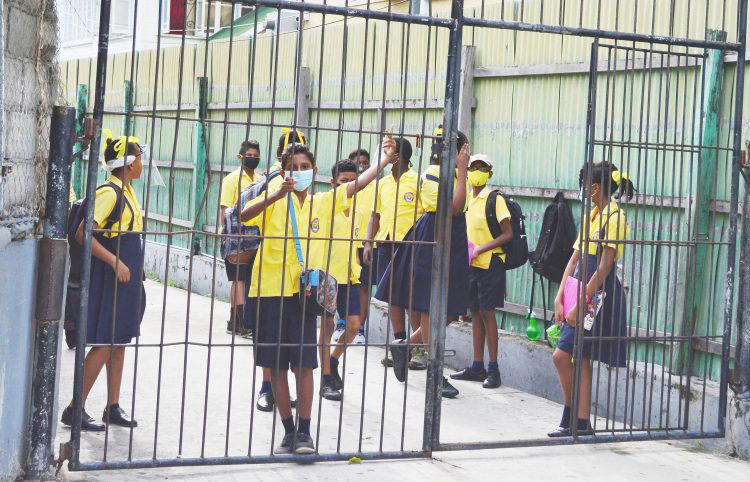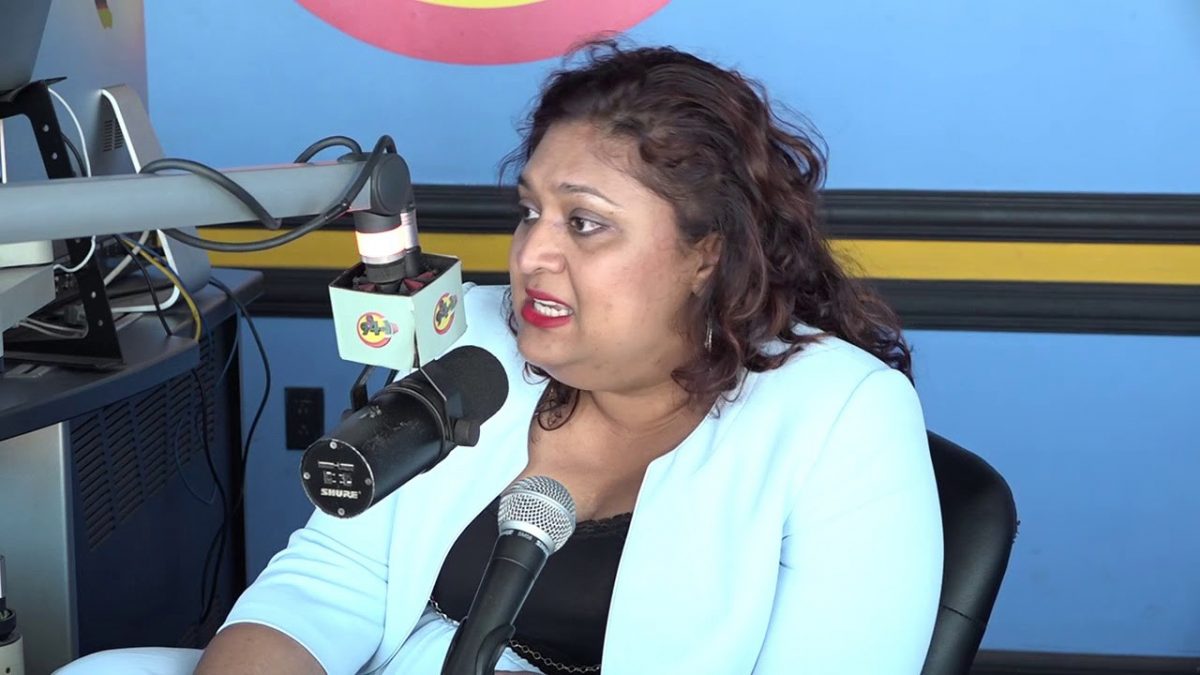There can be no doubt that as is the case in every facet of life that is essential to our well-being as a society, the relatively sudden and barnstorming arrival of COVID-19 has caught us completely by surprise. In a stunningly short space of time we have discovered that the antiquated logistical confines into which our education system has historically been fitted is now outmoded – hopelessly ill-equipped to meet the challenges of an evolving society, going forward.
With regard to COVID-19 we learnt that, like the various other social structures that hold our society together and, simultaneously, take it forward, our education system is hopelessly weak and ill-equipped to properly perform its substantive functions.
With the commencement of the new academic year in September now only a matter of a few weeks away, policymakers still appear to be decidedly uncertain as to where we are going insofar as a full and safe reopening of state schools across the country are concerned. Indeed, our feedback suggests that children who have, for some time now, adjusted themselves to what now fits into the slot of the so-called ‘new normal,’ that is, receiving education virtually, through technology, remain anchored to that perspective. Some, we fear, may have lost interest in formal schooling altogether. Returning to the classroom anytime soon, or at all, is not on their minds. The reality of what now appears to be the propensity of COVID-19 to come and go in waves and at intervals of its own choosing has created concern amongst teachers as much as amongst parents, that a full return to the classroom might portend a crisis.
In a sense, our education system may consider itself as having crossed a major hurdle, having seen through the sitting of the Grade Six and CXC/CSEC examinations. That, however, pales into insignificance when compared with the full-fledged recommencement of the substantive classroom curriculum and everything else that is associated with the full re-opening of school. The likely consequences of a backlash here do not bear thinking about.

It has to be said that up to the time of the writing of this article, a situation that demands focused leadership is being made worse by a long and overarching political circumstance that distracts from the COVID-19 priority. Whether, given this distraction, we are, as a country, able to throw the weight of our full resources behind the plight in which our education system now finds itself is doubtful.
It would be a pity too if the lessons that have arisen out of COVID-19, as they relate to the protracted disruption of classroom-based school system do not push our educators towards revisiting the prevailing system. One fears, however, that the required transformation will require new thinking that almost certainly goes beyond the intellectual resources currently available to our education system. No less important will be the need for the transformation to be driven by the fashioning of practices beginning at the apex of the country’s decision-making system.
At the risk of appearing to lionize COVID -19, what it has done is to expose the warts on the body of our traditional schooling system, and compelled the commencement of discourse on the need to create a ‘new normal’. If we set aside, for a moment, the enormous downside of COVID -19, the attendant crisis in education has created pathways that may have opened up opportunities for a far more equitable education for all Guyanese. The upheaval created by the pandemic has brought an unprecedented opportunity for decisive official intervention to revive, restore and refashion our education system, pursuits that have, for decades, been subject to little more than official lip service.
Here in Guyana, what the current school disruption has done is to draw far more pointed attention to the inequities across socio-economic groups and regions of the country as far as the quality of education is concerned. Hopefully, policy discourses on the current crisis will give rise to a significantly enhanced sense of urgency among our decision-makers at the levels of both the education system and the country as a whole regarding the need to re-fashion schooling practices that create far more equal learning opportunities for children across our country.
The biggest challenge up until now reposes in the fact that, suddenly, we have had to shift largely to a learning-from-home mode. Suddenly, the roles of teachers, students and parents have changed. More than that, large numbers of homes of varying financial means have had to invest in the tools and services necessary to enable children to benefit fully from that learning-from-home mode, or else, watch part of the limited slot for their children’s education go to waste.
With hindsight, part of the reality here is that over the years our education system has been decidedly sluggish in its limited efforts to shift gears, to move our education to a technological plain that allows for the rolling out of a more robust virtual teaching/learning regime.
What the coronavirus has done, in large measure, is to accelerate the disappearance of the traditional classroom regime and the conventional chalk-and-talk teacher-focussed regime. Overnight, learners are cocooned in their individual spaces, a circumstance that compels teachers to have to unlearn the conventional methods of teacher/student communication and to fashion new ones. That, in itself, is a significant training challenge.
The rollout of online learning as a consequence of the upheaval created by the advent of the pandemic may have been “disorderly and inequitable,” but it has to be said that it now compels education administrators and teachers to think outside of the box, a practice which, in the instance of our education administrators, have not been particularly evident previously. As for teachers, they are now challenged to reach out to students individually, a challenge which, one expects will sharpen their person-to-person communication skills.
What has been comforting in the Guyana situation is that many teachers who have been traditionally ‘squeamish’ about the deployment of information technology in the teaching/learning process appear to have conquered that fear. Many of our teachers are currently engaged in seeking to understand the ‘new normal’ that has descended on our education system by exploring ways of integrating information technology into their conventional pedagogy in order to remain relevant. Surely, all of the evidence before us makes a compelling case for integrating a comprehensive, across-the-board Information Technology programme into the curriculum at the Cyril Potter College of Education. This initiative should not be preceded by the endless contemplation and counterproductive prevarication that has historically attended the behaviour of our education officials.
There is a critical role here for parents too. Direct day-to-day communication with their children can help with character-building that can do much to positively shape the personalities of children.
If there needs to be a sense of caution in any attempt to refashion our education system there can now be no serious doubt that the one-size-fits-all doctrine does not fit the bill for learners across the board. For this perspective to find its way into schools and into the wider society it needs to be part of the focus at public fora at which our lead administrators in the education system need to be present, prominent, and vocal. Again the question arises as to whether our ‘leading lights’ in education administration are as ‘comfortable’ as they ought to be in the information technology age.
If it would be bizarre to suggest that COVID-19 has been a boon to the education system, what it has done is to plant a red flag beside the weaknesses and inconsistencies in our education system. The mark that it has left speak eminently to the value of home-schooling even though it has to be said (again) that the modest initiative that has manifested itself here are largely accessible only to those who can afford the tools to receive it and the finances to pay for it. Whilst these initiatives are worthwhile, it is for the state sector to play a lead role in upgrading home schooling.
Change may not the suitable role to ascribe to what ought to be the new teacher focus. What is now clear, however, is that one of their key responsibilities is to guide children in the direction of new learning possibilities. This, in itself, is a ‘new normal’ that is intended to create a sustainable paradigm for what one might call a “needs-based curriculum.”
Even if there is no postponement of the start of our academic year in September (and few people are now betting on a certain opening of school in September) the desirability of creating new teaching/learning models and infusing much stronger levels of technology-driven tools into the process, should not be set aside. One makes this point cognizant of the fact that it has, historically, been the way of the Ministry of Education in Guyana to invent then de-invent ideas at the speed of light.
One of the challenges which we are almost certain to have to face when schools re-open, whenever that might be, is adherence by children to the routines associated with social distancing. Another is teacher concerns.
Well-thought rotation models of tuition can be a way to maintain social distancing in school in circumstances where, like ours, overcrowded classrooms are commonplace.
We find ourselves in a circumstance, incidentally, where professional development is as much a necessity for the teacher as re-orientation is important for children. The new normal goes right across the board.





